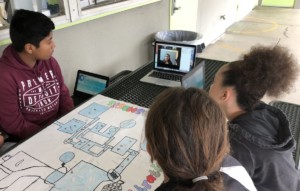3 Challenges to Human Development: Potential, Poverty, Productivity

Dave Lash has been studying innovation for 30 years; he’s learned some useful lessons on how systems change, how human beings develop, and the role innovation plays. Lash thinks human development faces three profound challenges:
- Potential – we are failing our moral obligation and economic necessity to provide for “life, liberty, and the pursuit of happiness.” Our system of cradle-to-career development of human potential is ragged, fragmented, and ineffective.
- Poverty – 20% of children are in poverty and another 20% are at the cusp, causing horrible disruptions of natural human development. Schools are a small, if vital, component of a complex socioeconomic system. Can’t innovate in isolation.
- Productivity – Baumol disease (the rising cost of labor in non-innovating sectors) is quietly leaching 2% of public education resources from schools each year! Must envision a long-range response beyond technology since human development is a social process. (See Education Suffering from Baumol’s Cost Disease.)
On cities: Lash thinks cities (not federal or state) are an appropriate scale/venue to address these challenges. Lash and his partner, Grace Belfiore, work with Promise Neighborhoods and other school-family-community initiatives.
On collective action: Collective impact, according to FSG, “occurs when organizations from different sectors agree to solve a specific social problem using a common agenda, aligning their efforts, and using common measures of success.” (Sounds good but still seems squishy to me.)
On poverty:Cities Reducing Poverty is a Canadian network of 13 “smart cities” sharing investment and communication strategies.
On innovation resistance: in Mastering the Dynamics of Innovation, James Utterback discusses the gravity of the dominant design (such as the traditional school model) pulling down and crushing “deviant” efforts. But go too far from the dominant design and isolation precludes diffusion. The sweet spot for innovation is the orbit that balances these forces.
On novelty: In How Breakthroughs Happen: The Surprising Truth About How Companies Innovate,Andrew Hargadon describes the story of Henry Ford’s assembly line and how the combination of familiar, debugged components proved transformational. Hargadon notes that innovation isn’t usually a bolt out of the blue but the creative recombination of ideas, people, and technologies in ways that spark revolutions.
On lead users: Eric von Hippel at MIT has been studying the sources of innovation for decades. In sector after sector, it comes down “lead users” who have the passion and persistence to keep working a problem until they find a solution. They are the first innovators although those that commercialize their discoveries usually get the credit. Lash suggests, “find, protect, and invest in lead users.”
On adaptive entrepreneurship: Amar Bhide broke the code on successful entrepreneurship in The Origin and Evolution of New Businesses. Lash studies successful entrepreneurs and built on Bhide’s work to outline four elements of adaptive enterprising:
- Plussing their way from one near-term opportunity to the next;
- Leveraging their skills and assets in increasingly sophisticated and uncommon ways;
- Upstreaming their attention and actions on emerging needs and trends; and
- Spanning disparate ideas and resources assembled through proactive cultivation.
On logic models: A decade agoLash wrote a report for the UK government, British Innovators. It includes a couple of useful logic models of the 5 gates (page 2.5) that precede enterprise and how it contributes to vitality (page 1.3). The recommendations remain relevant for cities and states that want to boost enterprise and build employment.
On networks: Lash thinks entrepreneursneed 5 networks: personal, regional, industry, innovation, and enterprise resources. These are also included in the British Innovators report (p. 4.4).
On mapping: Systems maps can be helpful to identify interactions and entry points (e.g., KnowledgeWorks Future of Learning or this postsec map).






0 Comments
Leave a Comment
Your email address will not be published. All fields are required.